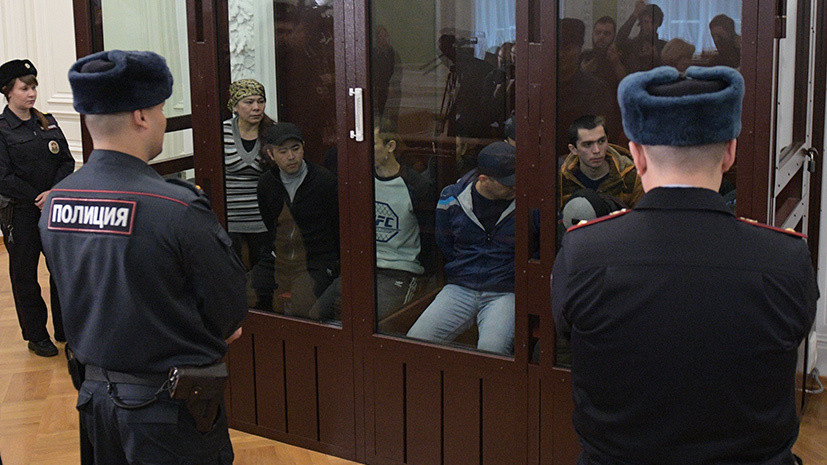A court in St. Petersburg sentenced Abror Azimov, the main person involved in the case of the terrorist attack on the St. Petersburg metro on April 3, 2017, to life. The remaining ten defendants received from 19 to 28 years in prison.
According to RIA Novosti, Akram Azimov, Ibrahim and Muhamadiusup Ermatov were sentenced by the 2nd Western District Military Court to 28 years in prison for a combination of crimes. The prosecutor requested a life sentence for them.
In addition, Sodik Ortikov received 22 years in prison. For 20 years they received Shokhist Karimov, Mahamadyusuf Mirzaalimov, Azamjon Mahmudov and Dilmurad Muidinov. In the 19th prison, the court appointed Seifullah Khakimova and Bahram Ergashev.
In addition to this, all the persons involved in the proceedings were fined in the amount of 500 to 800 thousand rubles. Convicts intend to appeal the verdict.
We will remind that the security forces detained eight people involved in the case a few days after the attack - on April 6, 2017. The ninth person involved in the attack was detained in the same month, April 17.
Two days later, the tenth defendant in the case was detained. After his arrest, the judge of the Moscow Basmanny Court, Elena Lenskaya, stated that the terrorist attack in St. Petersburg was financed from Turkey by members of an international terrorist group.
On May 11, the last suspect was detained.
Organizers wanted
The Investigative Committee said that the organizers of the terrorist attack in the St. Petersburg metro in 2017 - Sirozhidin Mukhtarov and Bobirjon Makhbubov - were put on the international wanted list. According to the UK, no later than 2013, a native of the Kyrgyz Republic, Mukhtarov created a terrorist community in the Syrian Arab Republic, planning terrorist attacks, including against the Russian Federation and its citizens.
The agency said that the suspects made three explosive devices. Two bombs were made by suicide bomber Akbarjon Jalilov, who later carried explosives into the subway. On April 3, 2017, he placed one device on the platform of the Ploshchad Vosstaniya station, to subsequently power it remotely.
The first explosive device did not work due to design flaws, it was neutralized by law enforcement agencies. Jalilov left the second bomb with him and detonated on the stage between the Sennaya Ploshchad and Technological Institute-1 stations.
As a result of this attack 15 people were killed. According to the Ministry of Health, ten people, not counting the terrorist himself, died on the spot, another five died from their wounds later.
To gallery page
The UK notes that the effective work of law enforcement has prevented the undermining of the third device. So, a day before the explosion arranged by Jalilov, he handed over the bomb to his acquaintance Muhammadusuf Ermatov. He, along with his brother Ibrahim and other members of the group tried to assemble an explosive device, but security forces detained the attackers and neutralized the explosives.
The complexity of the investigation
The UK said that the investigation of the case was especially difficult because of the conspiracy measures resorted to by attackers. According to investigators, in the process of searching for places to carry out the terrorist attack, the convicts did not use the means of communication and avoided getting on surveillance cameras.
Irrefutable evidence of the involvement of the group in the terrorist attack was established using a complex of investigative actions and examinations. Investigators noted that during a unique investigative experiment, a mock explosive device was made at the place of residence of members of the terrorist community.
“The results of this experiment refuted the version of the defendants that they were not aware of their participation in terrorist activities, since the manufacture of such a device could not go unnoticed by the residents of the apartment,” the Investigative Committee explained.
In addition, investigators did a great job of investigating the traces that remain when using electronic communications.
“It was the analysis of a large body of technical data that made it possible to make an unambiguous conclusion about the actions of individuals, despite their active opposition and the nomination of their versions of what happened, which were refuted by the investigation,” the IC said.

